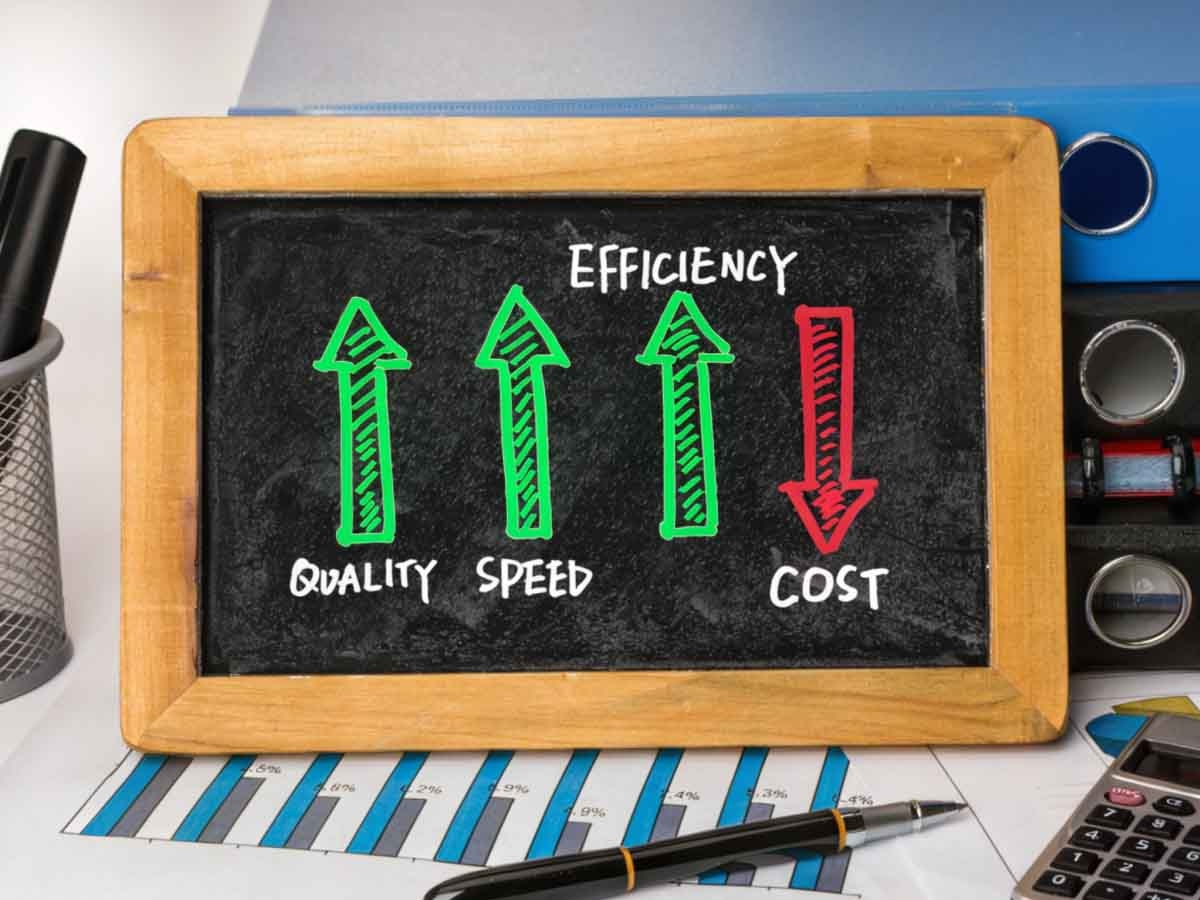Time is money, and in today’s productivity-focused work environments, this is truer than ever. However, many professionals grapple with distractions and inefficiencies that hamper productivity. Identifying and addressing time-wasting habits enhances overall performance and helps employees achieve work-life balance.
In this post, we’ll share signs your employees are wasting time at work, and how to respond.
Why it’s important to identify time-wasting behaviors
Before diving into specific signs, it’s worth reiterating why detecting and addressing time-wasting matters:
- Misspent labor costs: When employees spend even 10-15% of their workdays on non–value-added activities, it translates directly into higher labor costs. If each person wastes 30 minutes a day in a 100-person company, you lose 50 staff hours per week — over 2,500 hours per year of paid but unproductive time.
- Lower employee engagement and morale: Disengaged employees are more likely to drift into time-wasting habits and bring their colleagues with them. Conversely, teams with leaders who address inefficiencies feel their time is valued, which boosts motivation and loyalty.
- Negative customer impact: In client-facing roles, wasted time means slower responses to customer inquiries, missed deadlines and lower overall service quality. Over time, dissatisfied clients look elsewhere.
- Poor organizational agility: Companies that know where time drains happen can pivot faster, reallocating resources to high-impact projects, streamlining processes and staying more competitive.
These stakes underscore why managers and HR teams need to be vigilant about wasted time at work. Early detection and intervention reduce wasted payroll dollars, raise employee satisfaction and improve bottom-line results.
7 signs employees are wasting time at work
Managers and leaders need to understand what constitutes time-wasting activities. It’s important to recognize that rest and breaks are essential to productivity, but there’s a difference between recharging and wasting time.
1. Personal conversations
What it looks like:
- Long, unstructured personal conversations that extend beyond the break room and distract uninvolved employees
- Team members huddled around personal “water-cooler” talk instead of diving into tasks
- Frequent chit chat, non-work related content sharing or debates on company communication channels
Building relationships and camaraderie boosts engagement and establishes workplace culture. However, when these interactions lack time boundaries or clear purpose, they become harmful. Frequent or extended personal conversations break concentration, delay task resumption and create a ripple effect as other colleagues overhear chats and join in, compounding the time loss.
2. Attendance issues
What it looks like:
- Employees leaving the office to run personal errands, get coffee or take lunch breaks and staying out longer than expected
- Frequent unexpected absences or sick days that disrupt team workflows
- Chronic early departures or late arrivals without notice that erode employees’ trust in each other
Going on a lunch break, taking a sick day and showing up late or leaving early isn’t an issue when these events occur irregularly. However, when they start happening together or frequently it’s a sign employees are burned out and wasting time to help the day go by faster.
3. Unproductive meetings
What it looks like:
- Team meetings that routinely overrun their scheduled time blocks
- Meetings without a shared agenda or clear objectives that often devolve into tangents
- Required “attendance” by multiple people who could be briefed via email or a short summary
Many employees report unnecessary meetings as the biggest time waster they encounter at work. Research suggests the average knowledge worker spends nearly 31 hours in unproductive meetings every month. When meetings don’t have a clear purpose or structure, you waste both the presenter’s and attendees’ time.
4. Multitasking or context switching
What it looks like:
- Employees working on two or more tasks at once, like answering emails while on a conference call
- Constantly switching between apps or projects instead of dedicating blocks of focus time
- Supervisors asking employees to switch priorities suddenly or demanding all tasks have equal priority
Multitasking and context switching hurt productivity and waste time, with research suggesting it takes 15-20 minutes for employees to reach peak creative focus. When managers ask employees to jump between tasks, they waste time reorienting around each project and eliminate important focus time.
5. Procrastination and delays
What it looks like:
- Employees repeatedly delaying the start of essential assignments until the last possible moment
- Frequent “day-of-deadline panics” where workers scramble to produce work in a rush
- Tasks that could have been completed in a few days stretched out into multiple weeks
- Key deliverables falling through the cracks
When employees procrastinate projects, delay deliverables or let tasks fall through the cracks completely, it’s often a sign of overwhelm — or an indication they need help with time management. As a manager, it’s your job to spot areas where employees waste time and provide guidance to support them.
6. Over Reliance on busywork or low-value tasks
What it looks like:
- High employee hours with low corresponding project completion rates
- Large amounts of unnecessary reports or beautiful but useless presentations
- More time spent in time-tracking or expense report apps than necessary
Being busy is not the same as being productive. Some employees fill their time with low-value tasks, either out of habit or in an effort to show they’re working. These busywork habits can inflate perceived workload without driving real progress. Managers may assume employees are fully occupied when in reality, they haven’t tackled higher-priority projects.
7. Blurred use of personal time vs. work time
What it looks like:
- Employees overusing personal devices during work hours to scroll through social media, shop or respond to personal messages
- Personal appointments taking an oversized amount of work hours without employees catching up
- Employees working extended hours and suffering from burnout
Employees need to take care of personal matters, sometimes during work hours. However, when the line between personal time and work time blurs, it leads to excessive time that’s wasted during the workday. Employees may try to catch up outside of business hours, but it’s not always 1:1 and a lack of availability for team members during the workday leads others to waste time as they wait for responses and deliverables.
Underlying causes of time wasting
While the signs above help you spot time-wasting behaviors, it’s important to recognize why these patterns arise. Addressing root causes makes interventions far more effective than simply punishing time-wasters or blaming it on personal failings. Common underlying factors of time-wasting include:
- Lack of engagement or purpose: Employees who don’t feel a sense of ownership, recognition or alignment with company goals are much more prone to drift into time-wasting habits.
- Unclear expectations and goals: Without well-defined objectives and performance metrics, staff don’t know what to focus on and may fall back on easy tasks and busywork.
- Poor workflows or inefficient processes: Outdated tools, bottlenecked approvals and cumbersome access to information mean employees waste time navigating bureaucracy.
- Insufficient training and skill gaps: If a team doesn’t have the necessary skills or training to complete tasks effectively or use tools properly, they spend hours troubleshooting or reinventing processes instead of working.
- Burnout and overwork: Overloaded employees sometimes procrastinate or burn time on distractions simply to cope with stress. Ironically, exhaustion fosters even more inefficiency.
- Personal issues: Employees may experience unavoidable personal issues like illness, family troubles or interpersonal problems that bleed into their work time.
Understanding these drivers helps you choose the right remedy, whether it’s an upskilling program, process redesign, more purposeful goal-setting or a complete culture reset to give employees mental health and wellness tools.
Strategies for addressing time-wasting behaviors
Once you understand the signs and underlying causes of wasted time, the next step is to take targeted actions to realign employee focus. These 10 strategies address common problem areas — tweak them to suit your organization’s size, culture and workflows.
1. Establish clear policies and expectations
Employees perform best when they know exactly where boundaries lie, and written policies set the stage for consistency. Start by documenting internet and device use guidelines, defining break windows and procedures and setting team meeting norms. Leaders also need to advocate for their teams. Make sure supervisors give employees tasks with set priorities and don’t ask them to shift gears throughout the day.
2. Deploy productivity monitoring tools
Productivity monitoring tools like ActivTrak provide powerful data to pinpoint exactly where and when attention drifts. This empowers leaders to make changes and adjustments based on numbers rather than gut feelings. However, organizations must ensure they collect and use productivity data ethically and transparently to avoid alienating employees.
3. Reduce unproductive meetings
Analyze how much time employees spend in unnecessary meetings and determine if they impact productivity. Insist meetings include a clear agenda and empower employees to decline meetings if they have higher priority work to focus on. Better yet, enforce end times for meetings and leverage project management tools to avoid wasting time in unnecessary meetings.
4. Offer training opportunities
Many employees want to be productive but don’t know how. Offer training opportunities to employees who take longer than expected on projects. They may need job-specific training to reinforce skills or guidance about how to manage their time better.
5. Foster an engaging workplace culture
Engaged employees are inherently more productive and less prone to time wasting because they feel invested in success. Motivate disengaged employees with more recognition, clear growth paths and increased collaboration. Encourage managers to link daily tasks to big-picture goals, offer growth opportunities, ensure workload balance and encourage cross-team collaboration.
6. Give employees ample breaks, time off and wellness tools
Encourage employees to set boundaries around where and when they work vs. when they engage in personal or leisure activities to help workers avoid distractions and create a more focused environment. Empower them to turn off notifications when they need to focus. Provide employees with tools to prioritize wellness including paid time off, health benefits and mental health tools to reduce stress and improve productivity.
7. Optimize workflows to reduce bottlenecks and idle time
Bottlenecks often lead to idle time, but workflow optimization minimizes these lulls. Automate routine, repetitive tasks like timekeeping and expense reporting so employees don’t have to shift their focus to less important work. Leverage standardized templates and checklists and use capacity planning to streamline workflows. In additional, leaders should map end-to-end processes to understand where slowdowns occur and understand the amount of time tasks are expected to take to measure trends against organizational benchmarks.
8. Provide individual coaching for chronic time-wasting cases
One size doesn’t fit all — some employees need individualized productivity coaching. Use data to drive discussions with employees about personal productivity levels and how they spend time throughout the day. Transparent and respectful coaching reinforces a culture that supports improvement rather than defaulting to punishment, helping employees feel supported rather than policed.
9. Introduce incentives and recognition programs
Positive reinforcement motivates employees to replicate good habits and public recognition fosters a culture that values productivity and focus. Incentives signal your organization is serious about efficiency and grateful for employees’ efforts, which builds loyalty and leads to lower turnover. Define performance-based rewards, recognize behavioral wins and ensure equity and transparency to motivate employees.
10. Continuously review, adjust and solicit feedback
Solving time-wasting isn’t a one-time fix, and a cyclical review process keeps you ahead of new patterns. At the same time, it’s important to solicit employee feedback to ensure adoption. Regularly audit policies and tools, conduct anonymous employee work surveys, hold periodic focus groups and iterate on solutions instead of one-time fixes.
Identify and help employees who are wasting time with ActivTrak
Identifying and stopping time-wasting activities during the work day is essential for enhancing productivity and achieving organizational goals. Leveraging productivity data guides better discussions, allows for more impactful policies and helps create a culture of transparency around time-wasting in your organization.
ActivTrak makes it easy to do all this and more, with comprehensive workforce analytics for deep insights into how work gets done. Pinpoint areas of wasted time like multitasking, browsing personal websites or unnecessary meetings and see how policies impact productivity. Track trends in workload balance or time utilization and see when, where and how employees are most productive — whether they’re in office or working remotely. Request a free demo to find out how ActivTrak helps you spot and fix time-wasting issues in your organization today.





